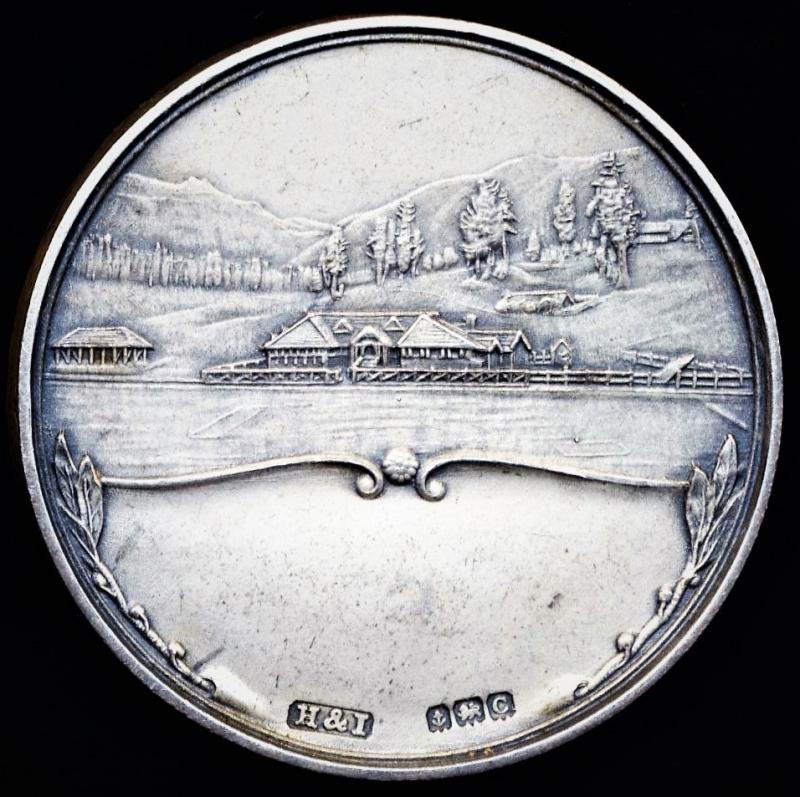India (Princely States): Jammu & Kashmir. Gulmarg Golf Club. Silver prize medal
Metal: Silver with Sterling Silver Birmingham England Hallmark for 1927
Weight: Approximately 25g
Dimension: Approximately 39mm
Obverse: A turbaned bust of Maharaja Partap Singh GCSI GCIE GBE, in jewels and uniform - the Maharaja of Jammu and Kashmir State (who reigned 1885-1925)
Reverse: Gulmarg Golf Club clubhouse to centre, with green to front and buildings in foreground. In background the hills, alpine trees and high mountains of the High Himalaya. Medals are known in hallmarked silver and bronze, all of the former seen to date have the makers marks for 'Hamilton & Inches (Edinburgh, Scotland)
The Gulmarg Golf Club has the distinction of having the highest altitude 18 hole golf course in the world - and is located in the 'High Himalaya'. It became a legendary and much patronized Golf Club by the British during the era of the British Raj
The origin of Gulmarg as the Golfing Mecca of India goes back to the late 19th century when a 6-hole course was made in 1890-91 by Colonel Neville Chamberlain - the greens were known as browns in those days. By 1896, three more holes in the nullah, below Raja Sir Amar Singh's house, were added. In 1901, the Maharaja of Kashmir (Partab Singh) donated land at Gulmarg for laying out a golf course, which came to be known as the Upper Golf Course. In 1915 a 9-hole course, also known as 'Rabbits Course' was also built. There was a separate 6-hole course for children. By the 1920s the resort was totally covered with golf courses: two 18-hole courses, the ‘Upper Course’ and the ‘Lower’ and one 9-hole middle course, which was more famous as the ‘Rabbits Course.
The first Golf championship was played at Gulmarg in 1922 - and the Gulmarg Golf Club Medals with the portrait of Maharaja Partap Singh, date from this time
The Nedou's Cup was introduced in 1929. In 1930, ‘The World’ beat Scotland. The same year saw the D.P. Vasu Championship for Women and the Children's Golf Competition. In 1931 the women's foursomes played at Gulmarg on the Lower Course. The Northern India Amateur Golf Championship was played from 1947 to 1953. After the troubled times of 1948 when golfing had come to stand still, the J&K government took over the maintenance of the now 18-hole course. Enthusiasts welcomed the revival of golf in Gulmarg in 1954 when many events, such as Duncan Vase, O.P. Vase, Civil Cup and Nedou’s Cup tournaments were held. Peter Thomson Associates of Australia redesigned and laid out the golf course to fit it with its natural beauty, by changing the location of greens and making it more challenging. The Northern India Championship was played at Gulmarg till 1989 when it had to be shifted to the Delhi Golf Club due to problems in the Valley.
Scarce, especially in such good condition
Code: 22815




